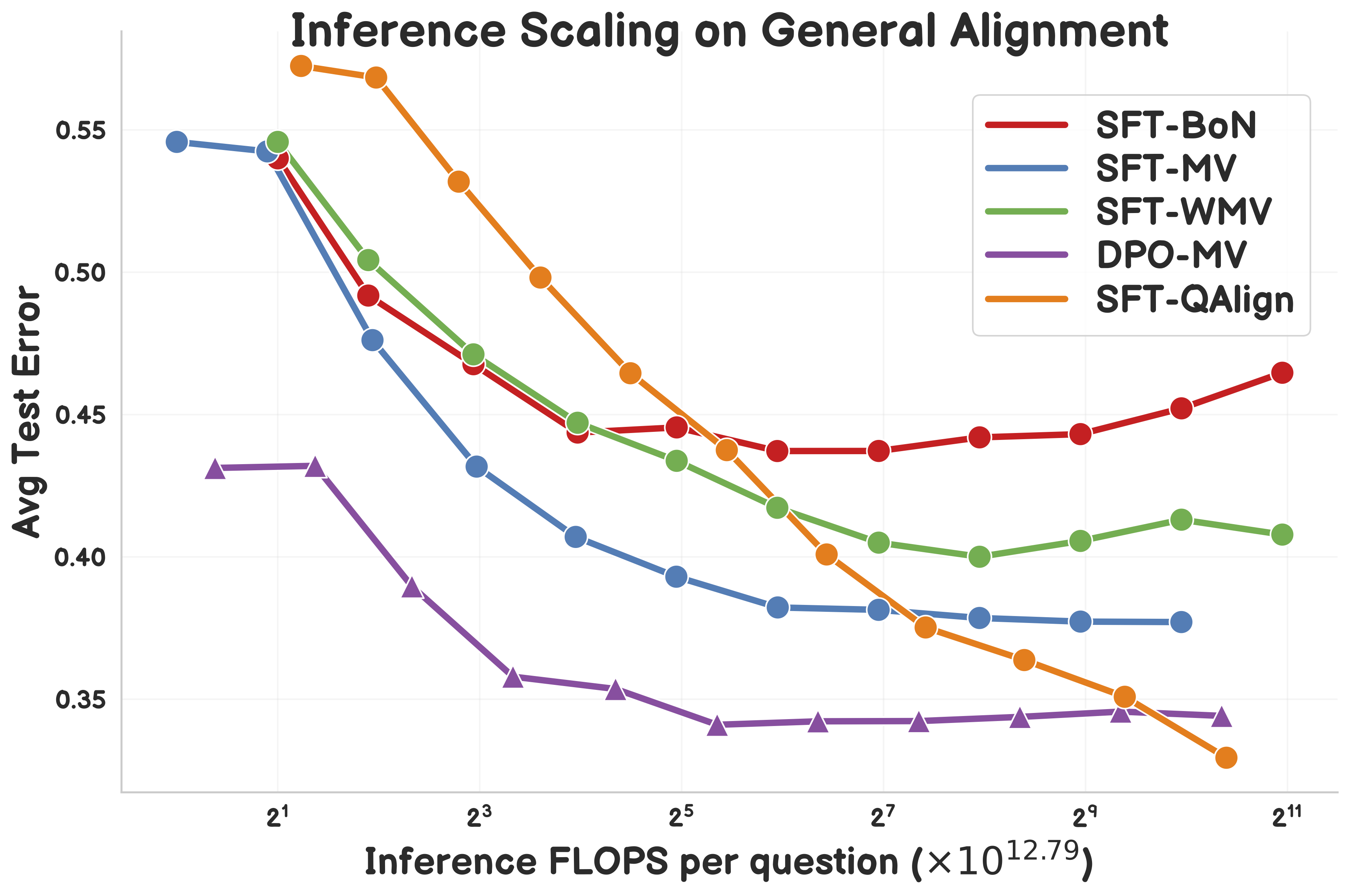Rethinking Test-Time Alignment for Language Models




Increasing test-time computation has emerged as a promising direction for improving language model performance, particularly in scenarios where model finetuning is impractical or impossible due to computational constraints or private model weights. However, existing test-time search methods using a reward model (RM) often degrade in quality as compute scales, due to the over-optimization of what are inherently imperfect reward proxies. We introduce QAlign, a new test-time alignment approach. As we scale test-time compute, QAlign converges to sampling from the optimal aligned distribution for each individual prompt. By adopting recent advances in Markov chain Monte Carlo for text generation, our method enables better-aligned outputs without modifying the underlying model or even requiring logit access. We demonstrate the effectiveness of QAlign on mathematical reasoning benchmarks (GSM8K and GSM-Symbolic) using a task-specific RM, showing consistent improvements over existing test-time compute methods like best-of-n and majority voting. Furthermore, when applied with more realistic RMs trained on the Tulu 3 preference dataset, QAlign outperforms direct preference optimization (DPO), best-of-n, majority voting, and weighted majority voting on a diverse range of datasets (GSM8K, MATH500, IFEval, MMLU-Redux, and TruthfulQA). A practical solution to aligning language models at test time using additional computation without degradation, our approach expands the limits of the capability that can be obtained from off-the-shelf language models without further training.

Average error rate across multiple evaluation datasets (GSM8K, MATH500, MMLU-Redux, TruthfulQA, and IFEval) as a function of the floating point operations (FLOPS) in log scale. We compare QAlign method with Tülu3-8B-SFT against four baselines: majority vote (MV) Tülu3-8B-DPO, and applied to Tülu3-8B-SFT the methods best-of-n (BoN), MV, and weighted MV (WMV). All experiments use temperature 1.0 with reasoning included in model outputs. Note that Tülu3-8B-DPO model is the result of doing preference finetuning on the Tülu3-8B-SFT with 271k preference pairs. The costs associated with this process are not accounted for in this plot.
@misc{faria2024sample,
title={Sample, Don't Search: Rethinking Test-Time Alignment for Language Models},
author={Gon{\c{c}}alo R. A. Faria and Noah Smith},
year={2024},
eprint={2024.xxxxx},
archivePrefix={arXiv},
primaryClass={cs.CL},
note={Website: \url{https://www.questdecoding.com/qalign}}
}